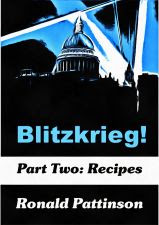You might have expected this to be similar to the pale version, just with more caramel. But it isn’t. The grist is, in reality, rather different. For a start, around a third of it consists of grits. Something totally absent from the pale version. It seems to substitute for a good chunk of the mild malt.
The sugar is different, too. “M. Brazilian” rather than the “RC(3)” in the pale. I’ve interpreted it as being a type of raw cane sugar. There’s also rather more caramel in this version.
There’s just a single type of Kent hops. I’ve guessed Fuggles. Which seems fair enough for a Mild. At a lower hopping rate than for Pale: 4.25 lbs per quarter (336 lbs) of malt compared to 5.75 lbs.
| 1904 Tetley X | ||
| pale malt | 2.50 lb | 31.33% |
| mild malt | 1.50 lb | 18.80% |
| grits | 2.67 lb | 33.46% |
| brown sugar | 1.25 lb | 15.66% |
| Caramel 1000 SRM | 0.06 lb | 0.75% |
| Fuggles 120 mins | 0.75 oz | |
| Fuggles 30 mins | 0.75 oz | |
| Goldings dry hops | 0.25 oz | |
| OG | 1039 | |
| FG | 1009 | |
| ABV | 3.97 | |
| Apparent attenuation | 76.92% | |
| IBU | 19 | |
| SRM | 12 | |
| Mash at | 149º F | |
| Sparge at | 165º F | |
| Boil time | 120 minutes | |
| pitching temp | 61º F | |
| Yeast | Wyeast 1469 West Yorkshire Ale Timothy Taylor | |











































































14 comments:
Hmmm. Grits aren't too common in the UK. I assume flaked maize would be a good substitute? But 'brown sugar'? I have 4 different kinds of brown sugar in my kitchen cupboard (not including raw cane sugar) and they all have wildly different tastes.
Hi Ron - did the breweries at this time self-declare beer styles in the brown beer range, or where there objective guidelines? I mean, could a brewery brew a pale ale-ish recipe and badge it up as mild if they wanted a mild for their beer range? Or brew a mild and call it a bitter if they so wished?
For 1904 this mild ale really resembles a mid to late 20th century mild ale.
Oscar
For home brew versions, just normal supermarket Polenta would be the go. Boil to a mushy porridge, cool to strike temp and then into the main mash.
Last time I had Tetley's Mild was in 1976, did they still use maize in those days?
An interesting concoction. So you get a lighter body from sugar and a fuller body from more than 30% grits. I guss it all came down to money. Might give this a try.
There were no guidelines. Brewers still badge Pale Ales as Mild. Think Tim Taylor Golden Best.
Well, it didn't in the 1980s. Then the adjunct was torrefied barley.
I've lived in several sugar growing regions in Australia and "brown sugar" nowadays is just finely ground white sugar that has had a proportion of molasses added back in. Raw cane sugar would be my choice.
Thanks Ron. I looked up Golden Best as I'd not had it before and yes that really does look like a pale ale! Noted that they've changed the ABV from 3.5 to 3.4 because of HMRC nonsense.
That is fascinating I assume with a low IBU of 23ish that golden best was a really light coloured mild ale.
Oscar
Or just use cornflakes and you don't have to boil the polenta. Compare prices per kg and also check the world foods aisle for "corn meal" which can be much cheaper than "polenta" although it's the same thing.
Tim Taylor's Dark Mild is just Golden Best with caramel.
Like IKEA Lager and Dark Lager - caramel is the only difference in ingredients. Wonder who brews that? No you don't need an Allen key to open the bottle, etc etc.
That is interesting.
Oscar
Post a Comment